
Panama City: A Fusion of History, Culture, and Modernity
Discover Panama City: A vibrant capital where modern skyscrapers meet historic charm, offering stunning views, rich culture, and access to nature's wonders.
Panama City, the vibrant capital of Panama, is a unique blend of old-world charm and modern sophistication. Nestled between the Pacific Ocean and lush rainforests, this bustling metropolis offers a rich tapestry of experiences for every traveler. From its iconic skyline dominated by skyscrapers to the cobbled streets of Casco Viejo, Panama City is a destination that promises both adventure and relaxation. One of the city's most famous landmarks is the Panama Canal, an engineering marvel that connects the Atlantic and Pacific Oceans. Visitors can explore the Miraflores Locks to witness the intricate workings of the canal and learn about its historical significance. The Amador Causeway, a scenic road that stretches into the Pacific, provides stunning views of the city and is a popular spot for dining and leisure. Casco Viejo, the historic district, is a UNESCO World Heritage Site that transports visitors back in time with its colonial architecture, charming plazas, and vibrant nightlife. Here, you can wander through narrow streets lined with colorful buildings, visit the beautiful Metropolitan Cathedral, and enjoy a meal at one of the many rooftop bars and restaurants offering panoramic views of the city. For nature enthusiasts, Panama City's proximity to natural wonders is unparalleled. The Metropolitan Natural Park is a tropical oasis within the city limits, home to diverse wildlife and offering hiking trails with breathtaking views. The nearby Soberanía National Park is a haven for birdwatchers, while the San Blas Islands provide a tropical paradise just a short trip away. Panama City's culinary scene is a delightful mix of traditional Panamanian flavors and international cuisine. Seafood lovers will relish the fresh catch of the day at the famous Mercado de Mariscos, while foodies can explore trendy restaurants and food markets across the city. Shopping enthusiasts will find everything from high-end boutiques to local artisan markets, ensuring a memorable retail experience.
Local tips in Panama City
- Visit the Panama Canal early in the morning to avoid crowds and see the most ship activity.
- Take a guided tour in Casco Viejo to learn about its rich history and hidden gems.
- Wear comfortable shoes for exploring the city's diverse neighborhoods and parks.
- Try local dishes like ceviche and sancocho at the Mercado de Mariscos for an authentic taste of Panama.
- Use the Metro or Uber for convenient and affordable transportation around the city.
Neighbourhoods in Panama City
Panama City: A Fusion of History, Culture, and Modernity
Panama City, the vibrant capital of Panama, is a unique blend of old-world charm and modern sophistication. Nestled between the Pacific Ocean and lush rainforests, this bustling metropolis offers a rich tapestry of experiences for every traveler. From its iconic skyline dominated by skyscrapers to the cobbled streets of Casco Viejo, Panama City is a destination that promises both adventure and relaxation. One of the city's most famous landmarks is the Panama Canal, an engineering marvel that connects the Atlantic and Pacific Oceans. Visitors can explore the Miraflores Locks to witness the intricate workings of the canal and learn about its historical significance. The Amador Causeway, a scenic road that stretches into the Pacific, provides stunning views of the city and is a popular spot for dining and leisure. Casco Viejo, the historic district, is a UNESCO World Heritage Site that transports visitors back in time with its colonial architecture, charming plazas, and vibrant nightlife. Here, you can wander through narrow streets lined with colorful buildings, visit the beautiful Metropolitan Cathedral, and enjoy a meal at one of the many rooftop bars and restaurants offering panoramic views of the city. For nature enthusiasts, Panama City's proximity to natural wonders is unparalleled. The Metropolitan Natural Park is a tropical oasis within the city limits, home to diverse wildlife and offering hiking trails with breathtaking views. The nearby Soberanía National Park is a haven for birdwatchers, while the San Blas Islands provide a tropical paradise just a short trip away. Panama City's culinary scene is a delightful mix of traditional Panamanian flavors and international cuisine. Seafood lovers will relish the fresh catch of the day at the famous Mercado de Mariscos, while foodies can explore trendy restaurants and food markets across the city. Shopping enthusiasts will find everything from high-end boutiques to local artisan markets, ensuring a memorable retail experience.
When is the best time to go to Panama City?
Iconic landmarks you can’t miss
Miraflores Visitor's Center
Discover the engineering marvel of the Panama Canal at the Miraflores Visitor Center, where history and technology meet in stunning views and interactive exhibits.
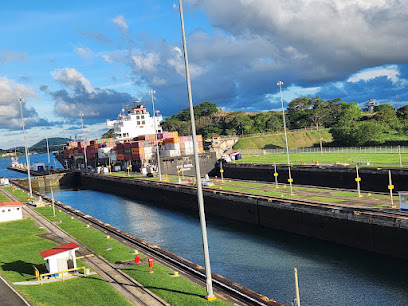
Parque Omar
Explore the lush landscapes and vibrant recreational activities at Parque Omar, the ultimate urban oasis in Panama City.
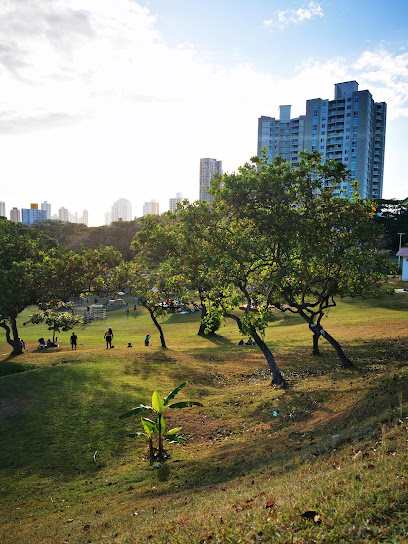
Panamá Viejo
Explore the historical ruins of Panamá Viejo, a UNESCO World Heritage site rich in colonial history and captivating architecture.
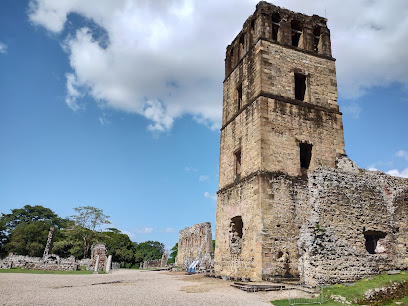
Biomuseo
Discover Panama's vibrant ecosystems at Biomuseo, a unique science museum blending architecture and nature's wonders.
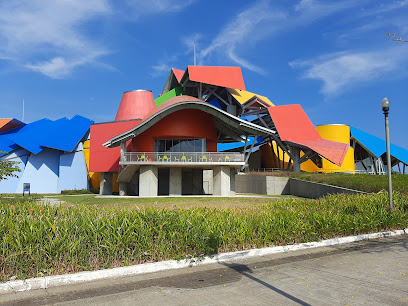
France Square
Experience the vibrant beauty and cultural richness of France Square, a must-visit park in the heart of Panama City.
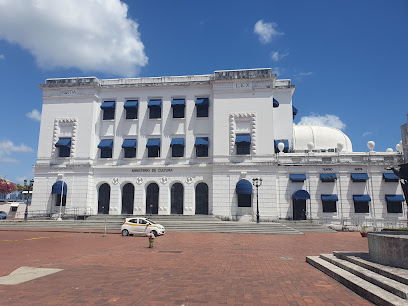
Pacific Lookout
Experience stunning vistas of Panama City and the Pacific Ocean at Pacific Lookout, a lush park perfect for relaxation and photography.
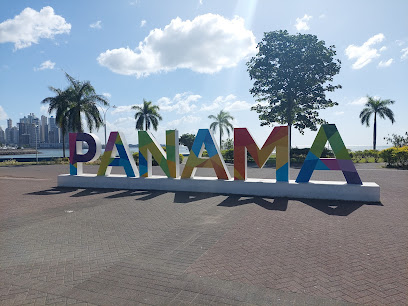
Metropolitan Natural Park
Discover the breathtaking beauty of Metropolitan Natural Park, an urban oasis in Panama City, filled with diverse wildlife and stunning landscapes.

Plaza Simón Bolívar
Discover the serene beauty of Plaza Simón Bolívar, a lush park in Panama City that celebrates history and nature with every step.
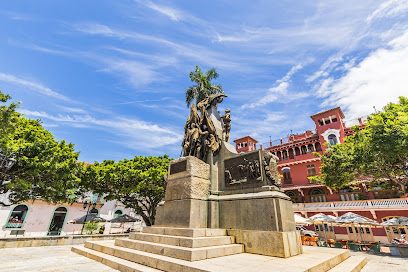
Panama Canal Museum
Explore the Panama Canal Museum, a historical gem in Panama City showcasing the engineering marvel of the Panama Canal and its global significance.
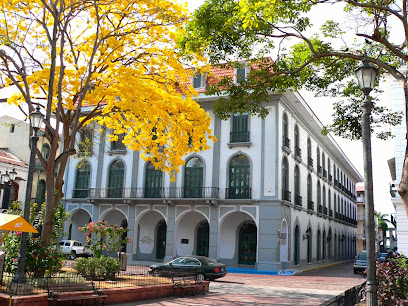
Metropolitan Natural Park Visitor Center
Explore the lush landscapes and rich biodiversity at the Metropolitan Natural Park Visitor Center in Panama City, a perfect blend of nature and education.
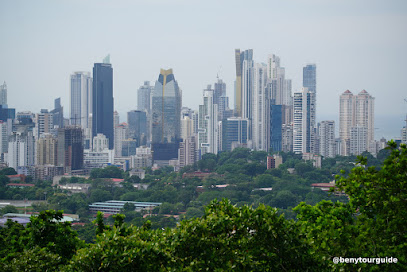
National Theatre
Explore the National Theatre of Panama, a stunning cultural landmark that showcases the rich performing arts scene in the heart of Panama City.
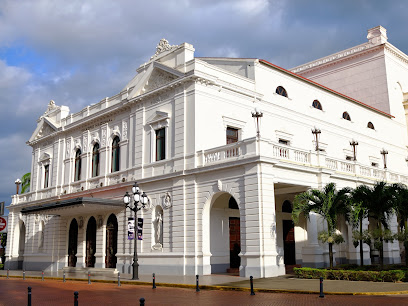
Mirador de las Américas
Experience breathtaking views of the Panama Canal and Panama City skyline at the iconic Mirador de las Américas, a prime observation deck.
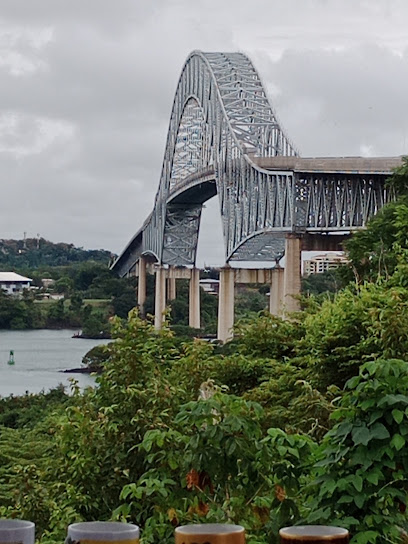
Metropolitan Cathedral Basilica of Santa Maria the Ancient
Explore the architectural grandeur of the Metropolitan Cathedral Basilica of Santa Maria la Antigua, a historic gem in Panama City reflecting rich cultural heritage.
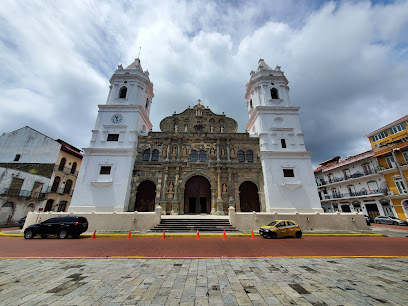
Town Square of Casco Antiguo
Experience the vibrant heart of Panama City at the Town Square of Casco Antiguo, where history, culture, and community come alive.
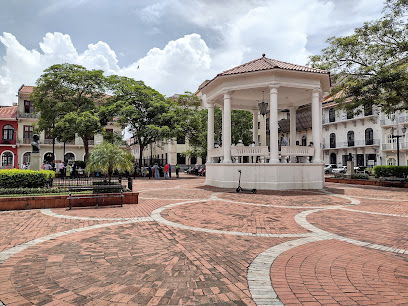
Punta Culebra Nature Center
Discover the enchanting Punta Culebra Nature Center, a captivating destination for nature lovers and families in Panama City, celebrating biodiversity and conservation.
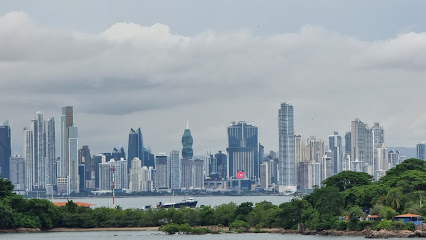
Unmissable attractions to see
Miraflores Visitor's Center
Explore the Miraflores Visitor's Center, where history meets engineering marvels at the Panama Canal, offering stunning views and engaging exhibits.

Panamá Viejo
Explore the captivating ruins of Panamá Viejo, a UNESCO World Heritage site that narrates the rich history of Panama's colonial past amidst beautiful landscapes.
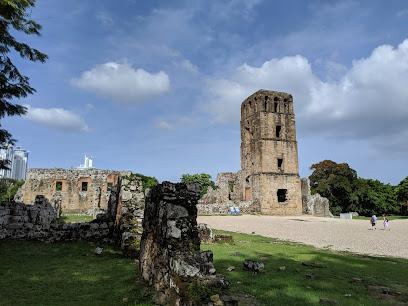
Parque Nacional Camino de Cruces
Explore the lush landscapes and rich biodiversity of Parque Nacional Camino de Cruces, a serene national park near Panama City, perfect for nature lovers and adventurers.

Photo Parador - Cinta Costera
Experience the breathtaking views and vibrant culture at Photo Parador - Cinta Costera, Panama City’s premier coastal promenade.
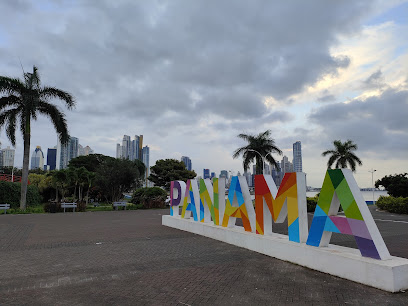
Merca Panamá
Explore Merca Panamá: A colorful farmers' market showcasing local produce, delicious street food, and vibrant Panamanian culture in the heart of Panama City.
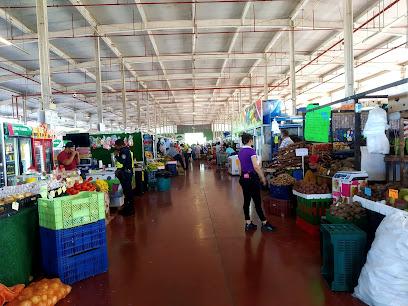
Plaza Simón Bolívar
Explore the lush beauty and cultural heritage of Plaza Simón Bolívar, a serene urban park in the heart of Panama City, rich with history and vibrant local life.
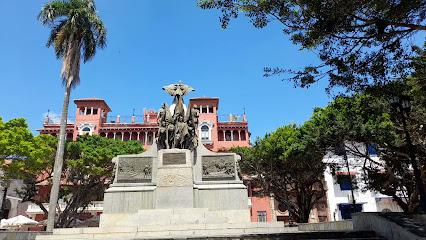
Gamboa Rainforest Reserve
Experience the breathtaking biodiversity of Gamboa Rainforest Reserve in Panama, where adventure and tranquility await in a lush natural paradise.
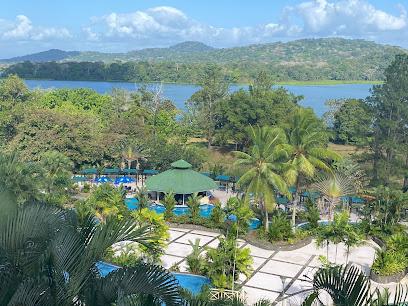
La Rana Dorada Casco
Discover La Rana Dorada Casco, a lively brewpub in Panama City offering craft beers and delicious local cuisine in a vibrant setting.
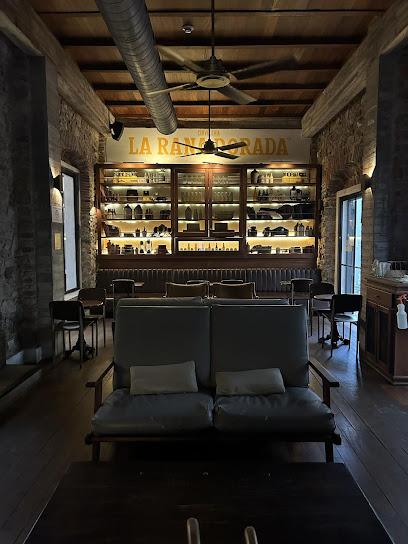
Panama Canal Museum
Explore the Panama Canal Museum: a gateway to understanding the history and impact of this world-renowned engineering marvel.
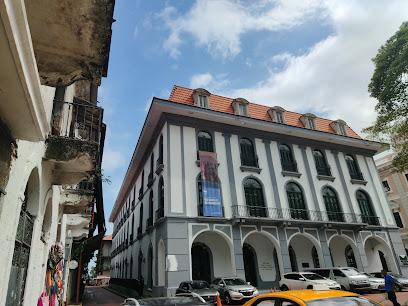
Playa de la Isla Taboga
Experience the stunning beauty and tranquility of Playa de la Isla Taboga, a hidden gem perfect for relaxation, adventure, and cultural exploration.
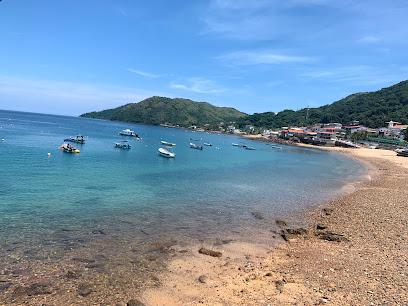
Metropolitan Natural Park Visitor Center
Explore the lush landscapes of Metropolitan Natural Park, a unique urban oasis in Panama City offering diverse wildlife and stunning views.
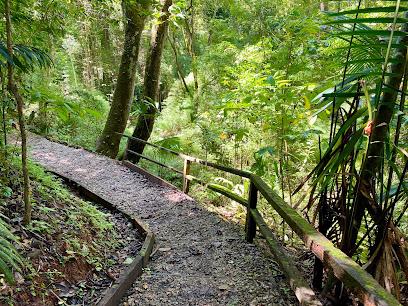
National Theatre
Discover Panama's National Theatre, a historical landmark showcasing the nation's vibrant arts scene and stunning architectural beauty.
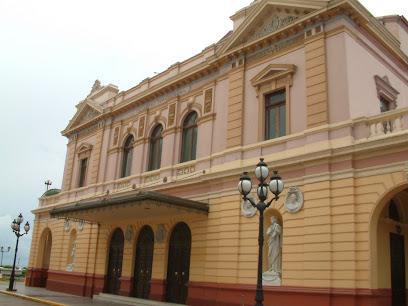
Mi Pueblito
Explore the vibrant culture of Panama at Mi Pueblito, a unique theme park filled with tradition, crafts, and scenic beauty.

Metropolitan Cathedral Basilica of Santa Maria the Ancient
Explore the stunning Metropolitan Cathedral Basilica of Santa Maria the Ancient, a historical gem in Panama City, showcasing breathtaking architecture and rich heritage.
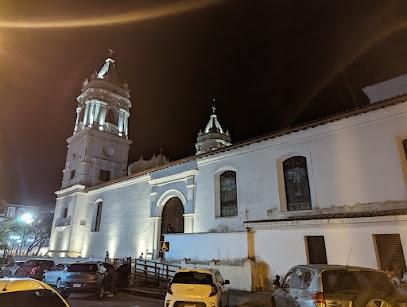
Punta Culebra Nature Center
Explore the vibrant ecosystems of Panama at Punta Culebra Nature Center, a unique destination for nature lovers on Amador Causeway.
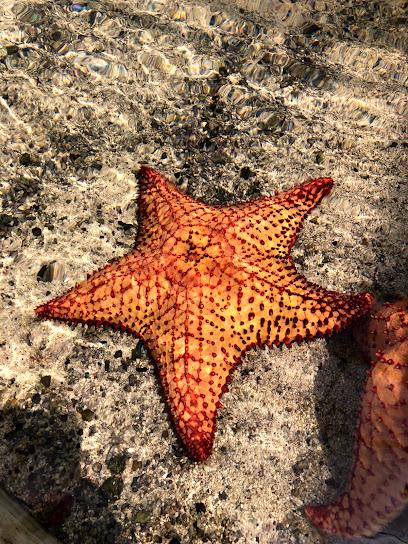
Essential places to dine
CasaCasco
Experience the vibrant flavors and exhilarating nightlife at CasaCasco, a premier grill and cocktail bar in Panama City.
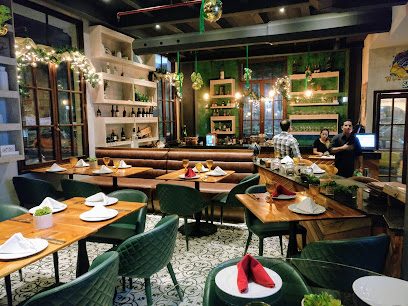
Beirut • Obarrio
Experience authentic Lebanese cuisine at Beirut • Obarrio in Panama City – where every dish tells a story of tradition and flavor.
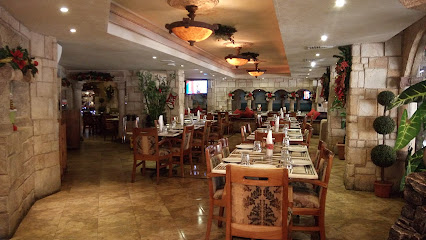
El Trapiche
Experience authentic Central American cuisine at El Trapiche in Panama City—your go-to spot for delicious breakfast and vibrant flavors.
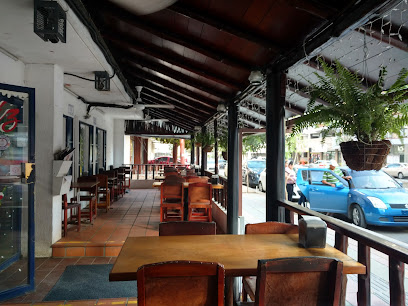
La Tapa Del Coco
Experience authentic Caribbean cuisine at La Tapa Del Coco in Panama City – where every dish tells a story.

La Pulpería - Casco Antiguo
Discover La Pulpería - A Culinary Gem in Casco Antiguo Offering Authentic Latin American Flavors and Vibrant Atmosphere.
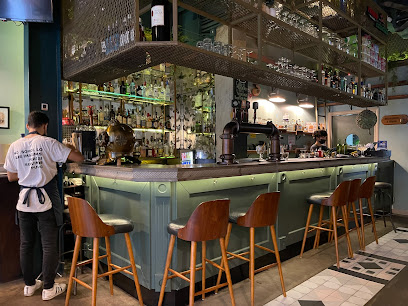
Fonda Lo Que Hay
Discover authentic Panamanian flavors at Fonda Lo Que Hay in Panama City, where every dish tells a story.
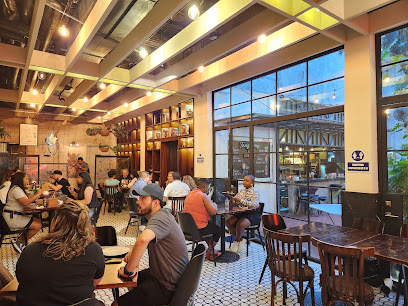
Lucca Panamá
Discover the heart of Italy in Panama City at Lucca Panamá – where authentic flavors meet exceptional dining.
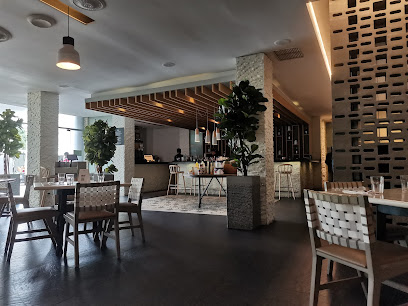
Azahar Panama
Discover the culinary artistry at Azahar Panama - where local flavors meet contemporary elegance amidst stunning skyline views.
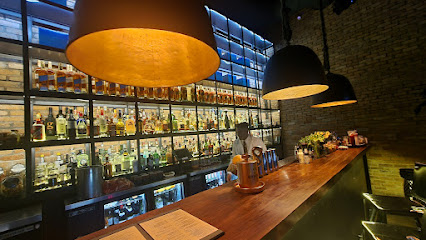
En La Fonda, Panamá
Discover authentic Creole flavors at En La Fonda in Panama City – where tradition meets taste in every dish.
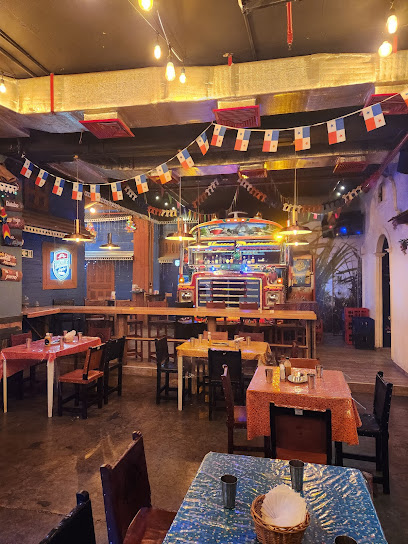
Hacienda Real Panamá
Discover exquisite chophouse cuisine at Hacienda Real Panamá, where culinary excellence meets vibrant atmosphere in Panama City.
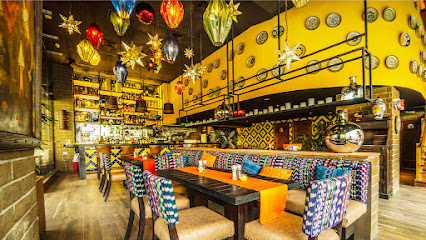
Segundo Muelle San Francisco
Indulge in authentic Peruvian flavors at Segundo Muelle San Francisco, where exceptional cuisine meets vibrant ambiance in Panama City.
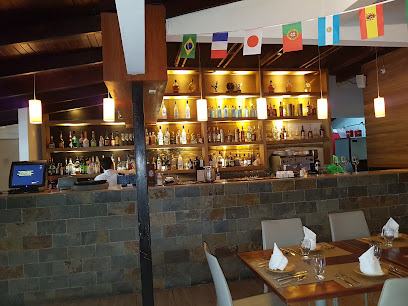
Diablicos
Discover the flavors of Panama at Diablicos – where tradition meets taste in a vibrant setting.
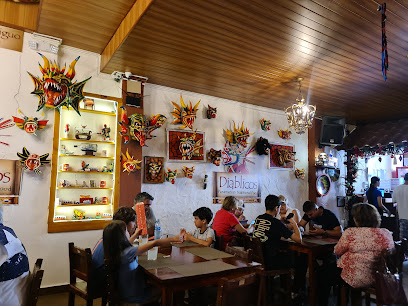
Restaurante Santa Rita
Experience authentic Argentinian flavors at Restaurante Santa Rita in Panama City – a must-visit steak house and tapas restaurant.
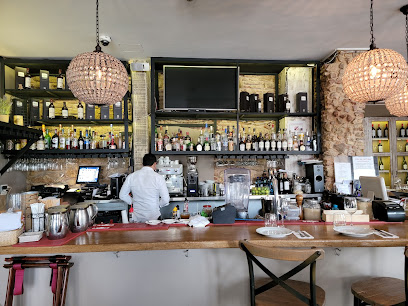
Brazzeiro Panamá
Experience authentic Brazilian cuisine at Brazzeiro Panamá - a vibrant restaurant offering delicious grilled meats and an inviting atmosphere in Panama City.
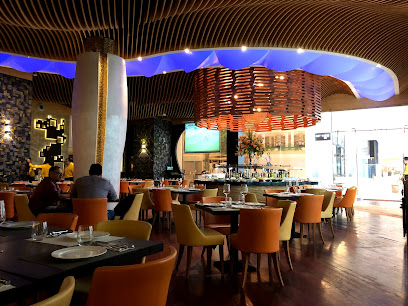
Cafe Coca Cola
Discover the heart of Panama City at Café Coca Cola, where local flavors meet warm hospitality in an inviting atmosphere.
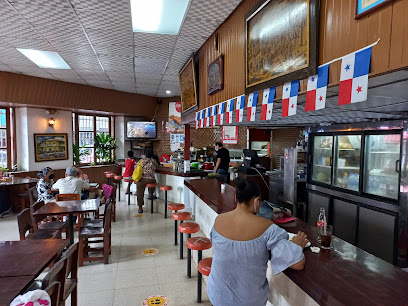
Markets, malls and hidden boutiques
Albrook Mall
Discover the vibrant shopping and dining scene at Albrook Mall, Panama's largest shopping destination, featuring over 500 stores and diverse culinary experiences.
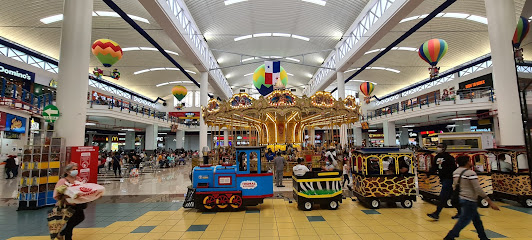
AltaPlaza Mall
Discover luxury shopping and diverse dining experiences at AltaPlaza Mall, Panama City's premier retail destination for tourists and locals alike.
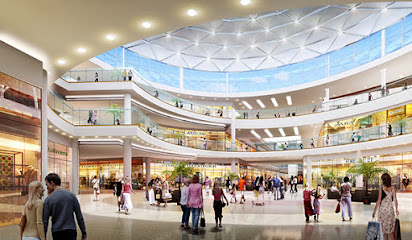
Town Center Costa del Este
Discover the vibrant shopping and dining experience at Town Center Costa del Este, Panama's premier lifestyle destination.
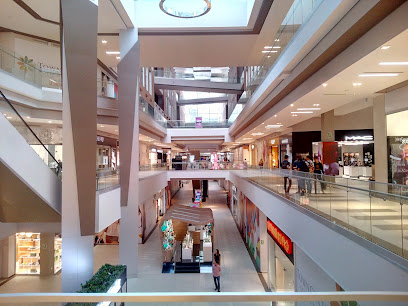
Soho City Center
Experience the best shopping, dining, and entertainment at Soho City Center in Panama City, where modernity meets local culture.

Balboa Boutiques - Strip Mall - Shopping Mall
Discover the vibrant shopping experience at Balboa Boutiques in Panama City, offering diverse shops, delightful dining, and entertainment for everyone.
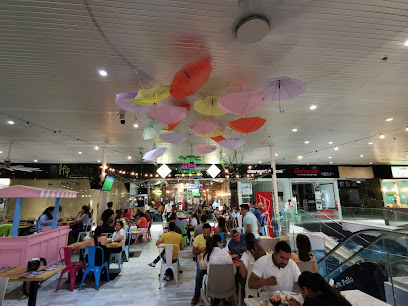
NINA Concept Store
Explore the NINA Concept Store in Panama City for unique gifts and a taste of local artistry in a vibrant shopping experience.
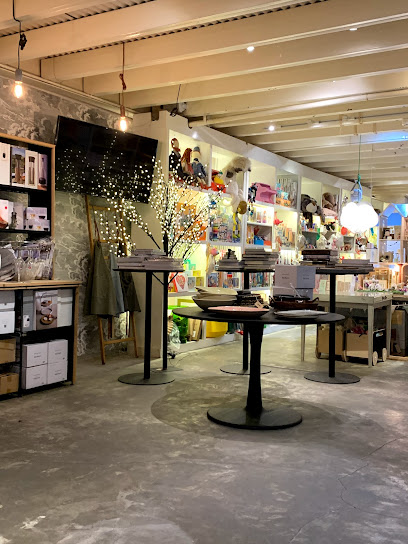
Louis Vuitton Panama Soho
Explore the luxurious world of Louis Vuitton in Panama Soho, renowned for exquisite leather goods and a premier shopping experience.
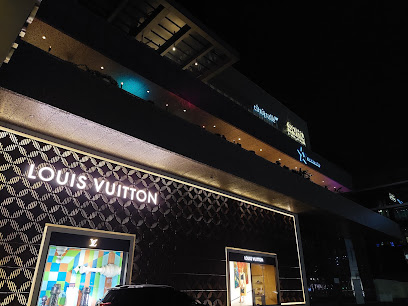
Cecil's Fashion, Panama
Discover the latest fashion trends at Cecil's Fashion in Panama City, a vibrant clothing store offering stylish apparel for every taste.
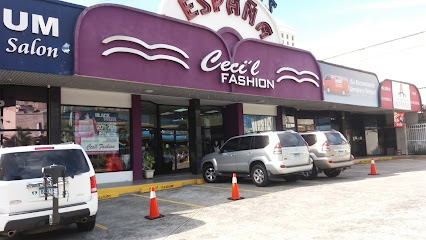
Shopping in Panama
Experience the vibrant shopping scene in Panama City, where fashion meets local culture and unique finds await every traveler.

1920 V & N Antiques
Explore a treasure trove of vintage finds, exquisite chinaware, and unique gifts at 1920 V & N Antiques in Panama City.
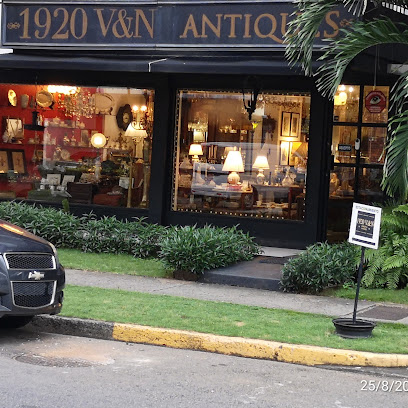
Belén Shops Panamá
Discover a shopping paradise at Belén Shops Panamá, where local culture meets modern retail in the heart of Panama City.
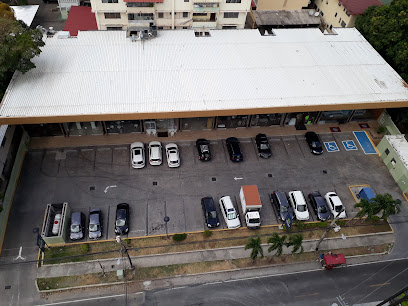
Souvenir PANAMA CANAL
Explore unique handcrafted souvenirs that embody the spirit of Panama at the Souvenir PANAMA CANAL in Panama City.
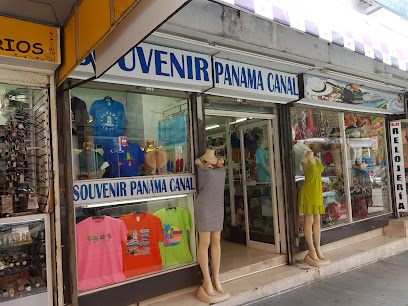
KALAS PANAMA
Explore Kalas Panama, a premier clothing store offering exquisite bridal and festive attire, showcasing the essence of Panamanian style in every stitch.
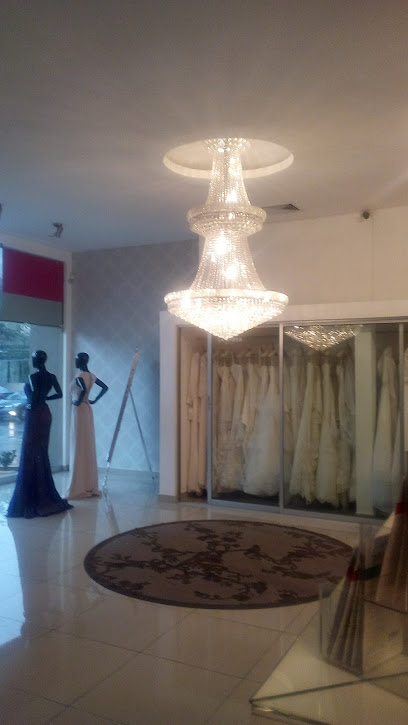
Monsters Showroom
Discover unique souvenirs and local artistry at Monsters Showroom in Panama City, where craftsmanship meets vibrant culture.
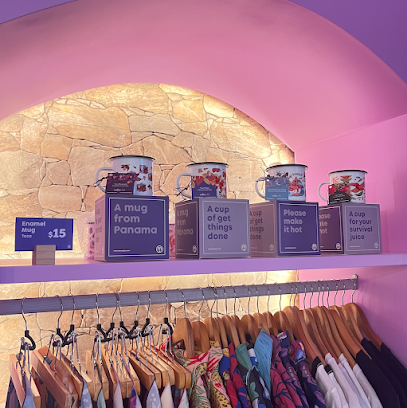
Princess Moon & Stars Boutique
Explore unique women's fashion at Princess Moon & Stars Boutique in Panama City, where local designs meet contemporary style.
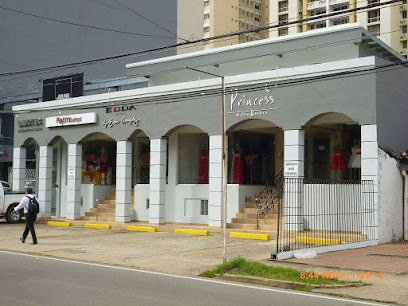
Essential bars & hidden hideouts
CasaCasco
Discover CasaCasco: A premier grill and cocktail bar in Panama City, where culinary delights meet an electrifying nightlife experience.
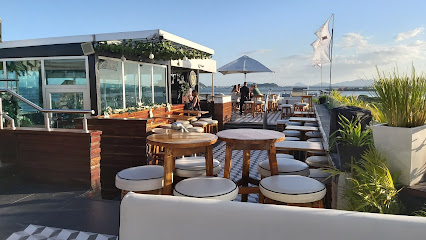
El Green Room
Experience the vibrant nightlife of Panama City at El Green Room, the ultimate karaoke destination where locals and tourists unite for unforgettable nights of music and fun.
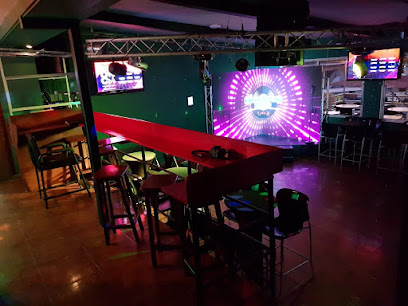
Alejandro's
Experience the vibrant nightlife of Panama City at Alejandro's, a dynamic bar and adult entertainment venue offering cocktails, karaoke, and unforgettable fun.
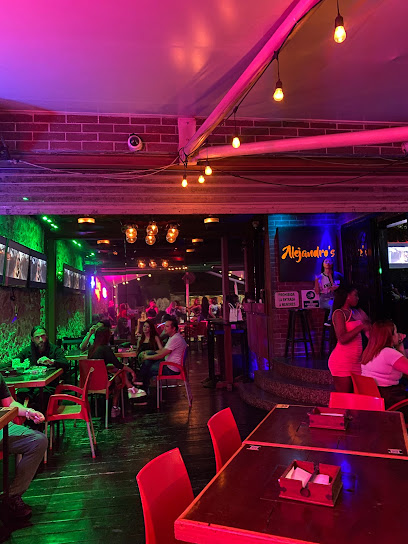
ROCK and Beer
Discover the heart of Panama City's nightlife at ROCK and Beer, a live music bar serving up great vibes, drinks, and unforgettable performances.
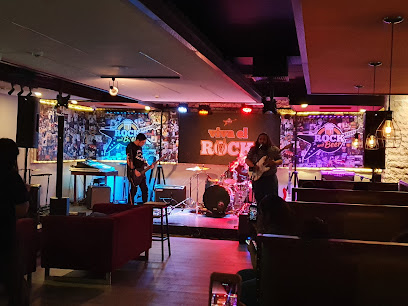
Pedro Mandinga Rum Bar
Discover the vibrant atmosphere and rich flavors of Panamanian rum at Pedro Mandinga Rum Bar, a cultural gem in the heart of Panama City.
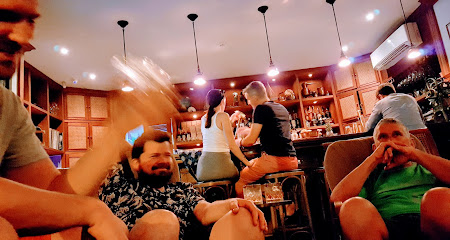
The Wallace
Experience the best of Scottish and English cuisine at The Wallace, a vibrant pub in Panama City offering hearty meals and a warm atmosphere.
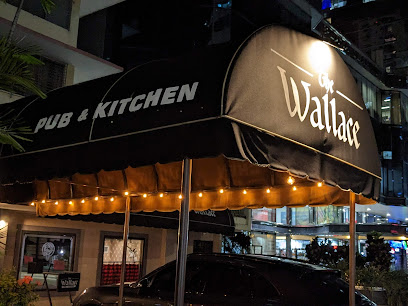
La Brasserie Pub
Discover the vibrant nightlife of Panama City at La Brasserie Pub, where great drinks and a lively atmosphere await you.
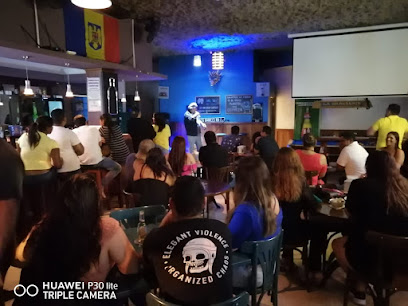
El Pavo Real
Experience the vibrant nightlife of Panama City at El Pavo Real, a lively bar offering creative cocktails and a welcoming atmosphere.
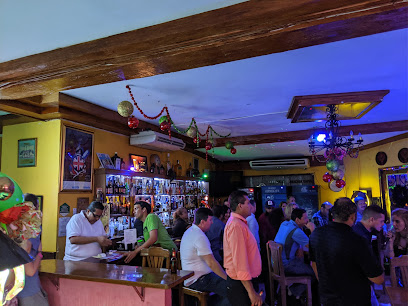
BierGarten
Discover the lively ambiance and delicious grilled specialties at BierGarten in Panama City, a true taste of Panamanian culture.
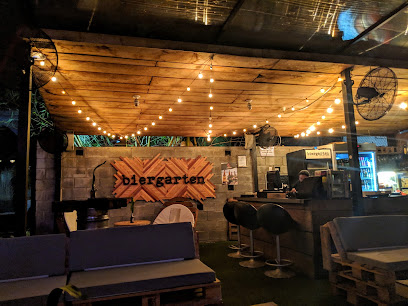
Amano Bar
Experience the best of Panama City at Amano Bar, where exquisite cocktails meet delectable cuisine in a vibrant atmosphere.
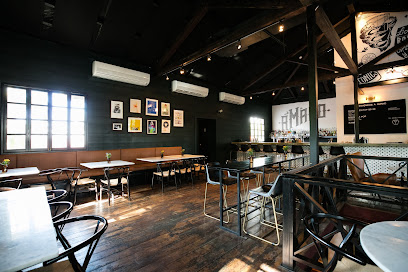
Chupitos 507
Experience the vibrant nightlife at Chupitos 507, Panama City's beloved bar known for its creative cocktails and lively atmosphere.
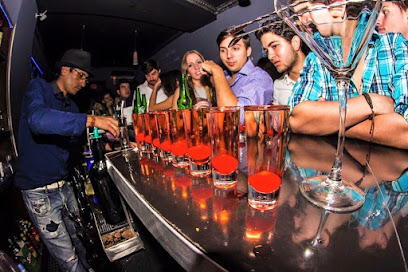
Murphy’s Bar Restaurant & Club
Discover the vibrant nightlife and delectable cuisine at Murphy’s Bar Restaurant & Club, the heart of Panama City's social scene.
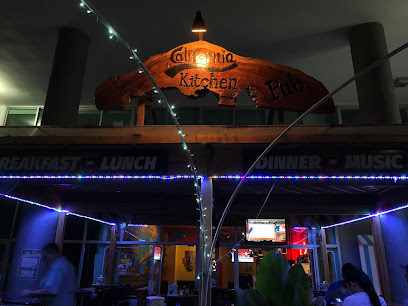
Element
Discover the vibrant nightlife of Panama City at Element, where innovative cocktails and delicious gastropub cuisine await.
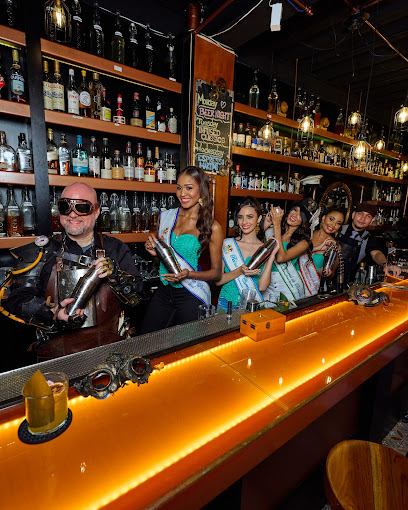
Inedito Rooftop Lounge
Discover the breathtaking views and vibrant atmosphere of Inedito Rooftop Lounge in Panama City, where culinary excellence meets stunning panoramas.
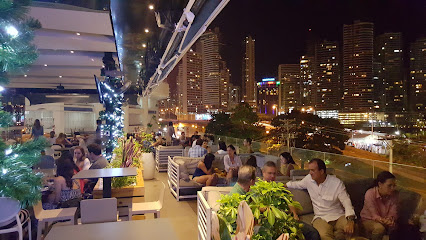
Sama Sky Lounge
Experience the vibrant nightlife of Panama City at Sama Sky Lounge, where exquisite cocktails meet breathtaking skyline views.
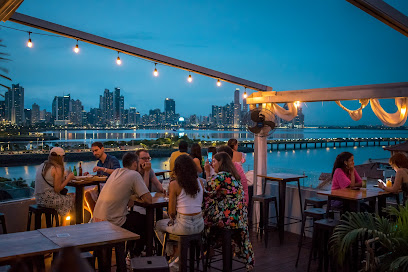
Local Phrases
-
- HelloHola
[oh-lah] - GoodbyeAdiós
[ah-dee-ohs] - YesSí
[see] - NoNo
[noh] - Please/You're welcomePor favor/De nada
[por fah-bor/deh nah-dah] - Thank youGracias
[grah-see-ahs] - Excuse me/SorryDisculpe/Perdón
[dees-cool-peh/pehr-dohn] - How are you?¿Cómo estás?
[koh-moh ehs-tahs] - Fine. And you?Bien. ¿Y tú?
[byen. ee too] - Do you speak English?¿Hablas inglés?
[ah-blahs een-glehs] - I don't understandNo entiendo
[noh ehn-tyen-doh]
- HelloHola
-
- I'd like to see the menu, pleaseQuisiera ver el menú, por favor
[kee-see-eh-rah behr ehl meh-noo, poor fah-bor] - I don't eat meatNo como carne
[noh koh-moh kahr-neh] - Cheers!¡Salud!
[sah-lood] - I would like to pay, pleaseQuisiera pagar, por favor
[kee-see-eh-rah pah-gahr, poor fah-bor]
- I'd like to see the menu, pleaseQuisiera ver el menú, por favor
-
- Help!¡Ayuda!
[ah-yoo-dah] - Go away!¡Vete!
[veh-teh] - Call the Police!¡Llame a la policía!
[yah-meh ah lah poh-lee-see-ah] - Call a doctor!¡Llame a un médico!
[yah-meh ah oon meh-dee-koh] - I'm lostEstoy perdido
[ehs-toy pehr-dee-doh] - I'm illEstoy enfermo
[ehs-toy ehn-fehr-moh]
- Help!¡Ayuda!
-
- I'd like to buy...Quiero comprar...
[kee-eh-roh kohm-prahr] - I'm just lookingSólo estoy mirando
[soh-loh ehs-toy mee-rahn-doh] - How much is it?¿Cuánto cuesta?
[kwan-toh kwehs-tah] - That's too expensiveEso es demasiado caro
[eh-soh ehs deh-mah-see-ah-doh kah-roh] - Can you lower the price?¿Puede bajar el precio?
[pweh-deh bah-har ehl preh-see-oh]
- I'd like to buy...Quiero comprar...
-
- What time is it?¿Qué hora es?
[keh oh-rah ehs] - It's one o'clockEs la una
[ehs lah oo-nah] - Half past (10)Media (10)
[meh-dee-ah (deh-eez)] - MorningMañana
[mah-nyah-nah] - AfternoonTarde
[tahr-deh] - EveningNoche
[noh-cheh] - YesterdayAyer
[ah-yehr] - TodayHoy
[oy] - TomorrowMañana
[mah-nyah-nah] - 1Uno
[oo-noh] - 2Dos
[dohs] - 3Tres
[trehs] - 4Cuatro
[kwah-troh] - 5Cinco
[seen-koh] - 6Seis
[seys] - 7Siete
[syeh-teh] - 8Ocho
[oh-choh] - 9Nueve
[nweh-veh] - 10Diez
[dyehs]
- What time is it?¿Qué hora es?
-
- Where's a/the...?¿Dónde está el/la...?
[dohn-deh ehs-tah ehl/lah] - What's the address?¿Cuál es la dirección?
[kwal ehs lah dee-rehk-syon] - Can you show me (on the map)?¿Puede mostrarme (en el mapa)?
[pweh-deh mohs-trar-meh (ehn ehl mah-pah)] - When's the next (bus)?¿Cuándo es el próximo (autobús)?
[kwan-doh ehs ehl proh-ksee-moh (ow-toh-boos)] - A ticket (to ....)Un boleto (para ....)
[oon boh-leh-toh (pah-rah)]
- Where's a/the...?¿Dónde está el/la...?
History of Panama City
-
Panama City was founded on August 15, 1519, by Spanish conquistador Pedro Arias Dávila. It was the first European settlement on the Pacific coast of the Americas and quickly became an important part of Spain's colonial empire.
-
In 1671, the city was attacked and sacked by the infamous pirate Henry Morgan. The city was almost entirely destroyed, leading to the decision to relocate and rebuild it a few kilometers away from the original site. This event is a pivotal moment in the city's history and marked the end of the original settlement.
-
Following its destruction, Panama City was relocated and reconstructed in 1673. The new city, known as Casco Viejo (or Casco Antiguo), was built on a peninsula surrounded by a defensive wall to protect against future pirate attacks. This area is now a UNESCO World Heritage Site.
-
Panama declared its independence from Spain on November 28, 1821. The city played a crucial role in this movement, serving as the center of political activity and the site where the declaration was signed. Panama subsequently joined Gran Colombia, a union of several South American countries.
-
On November 3, 1903, Panama separated from Colombia with the support of the United States. This was a significant turning point in the city’s history, leading to the construction of the Panama Canal, which would forever change Panama City's economic and cultural landscape.
-
The construction of the Panama Canal began in 1904 and was completed in 1914. This monumental engineering project transformed Panama City into a global hub of trade and commerce. The canal's completion made the city a strategic point for international maritime traffic.
-
In 1977, the Torrijos-Carter Treaties were signed by the United States and Panama, agreeing to transfer control of the Panama Canal from the U.S. to Panama by the end of the 20th century. This agreement was crucial for Panamanian sovereignty and bolstered national pride. The canal was officially handed over to Panama on December 31, 1999.
-
In December 1989, the United States launched Operation Just Cause, a military invasion aimed at deposing Panamanian leader Manuel Noriega. The invasion had significant impacts on Panama City, causing substantial damage and leading to a period of rebuilding and political restructuring in the years that followed.
-
In recent decades, Panama City has undergone significant modernization and development. The city's skyline is now dotted with skyscrapers, and it has become a major financial and commercial center in Latin America. The revitalization of Casco Viejo and the expansion of the Panama Canal are key highlights of this period.
Panama City Essentials
-
Panama City is easily accessible through Tocumen International Airport (PTY), which is located about 24 kilometers (15 miles) from the city center. The airport serves numerous international airlines and offers direct flights from major cities in North and South America, Europe, and Asia. Upon arrival, you can reach the city via taxis, ride-sharing services, or airport shuttle buses.
-
Panama City offers a variety of transportation options. The Metro system is efficient and covers key areas of the city. Buses are another inexpensive option, with routes covering most neighborhoods. Taxis and ride-sharing services like Uber are widely available. Renting a car is also an option, but be prepared for heavy traffic during peak hours. Walking is often the best way to explore the city's historic districts like Casco Viejo.
-
The official currency of Panama is the Balboa (PAB), which is pegged to the U.S. Dollar (USD); both currencies are used interchangeably. Credit and debit cards are widely accepted in most hotels, restaurants, and shops. However, it is advisable to carry some cash for smaller establishments and street vendors. ATMs are readily available throughout the city.
-
While Panama City is generally safe for tourists, it is important to stay vigilant. Avoid walking alone at night, especially in unfamiliar areas. Neighborhoods like El Chorrillo and Curundú have higher crime rates and should be avoided if possible. Keep your belongings secure and be cautious of pickpockets in crowded places. Stick to well-lit and populated areas to ensure your safety.
-
In case of an emergency, dial 911 for police, medical, or fire assistance. Tocumen International Airport has a medical station for emergencies. Major hospitals in the city include Hospital Punta Pacifica and Hospital Nacional, both of which offer high-quality medical care. It is recommended to have travel insurance that covers medical emergencies. Pharmacies are abundant for minor health issues and over-the-counter medications.
-
Fashion: Do dress in lightweight, breathable clothing due to the tropical climate. Avoid overly casual attire in upscale areas. Religion: Do respect religious customs. When visiting churches, dress modestly and remove hats. Public Transport: Do use the Metro and buses but be mindful of your belongings. Don't eat or drink on public transport. Greetings: Do greet people with a handshake or a friendly nod. A simple 'Hola' is polite. Eating & Drinking: Do try the local cuisine and be open to new flavors. Don't refuse hospitality as it is considered impolite.
-
To experience Panama City like a local, visit the Mercado de Mariscos (Seafood Market) for fresh seafood and local dishes. Spend an evening in Casco Viejo, exploring its colonial architecture, boutique shops, and vibrant nightlife. Take a walk along the Cinta Costera for stunning views of the skyline and the Pacific Ocean. Don't miss visiting the Panama Canal Miraflores Locks to see the engineering marvel in action.
Trending Landmark in Panama City
-
Miraflores Visitor's Center
-
Parque Omar
-
Panamá Viejo
-
Biomuseo
-
France Square
-
Pacific Lookout
-
Metropolitan Natural Park
-
Plaza Simón Bolívar
-
Panama Canal Museum
-
Metropolitan Natural Park Visitor Center
-
National Theatre
-
Mirador de las Américas
-
Metropolitan Cathedral Basilica of Santa Maria the Ancient
-
Town Square of Casco Antiguo
-
Punta Culebra Nature Center
Nearby Cities to Panama City
-
Things To Do in Colon
-
Things To Do in Portobelo
-
Things To Do in San Blas Islands
-
Things To Do in Chitre
-
Things To Do in Las Tablas
-
Things To Do in Bocas del Toro
-
Things To Do in Boquete
-
Things To Do in David
-
Things To Do in Volcan
-
Things To Do in Puerto Viejo
-
Things To Do in Sincelejo
-
Things To Do in Cartagena
-
Things To Do in Manuel Antonio
-
Things To Do in San Jose
-
Things To Do in Medellín

















